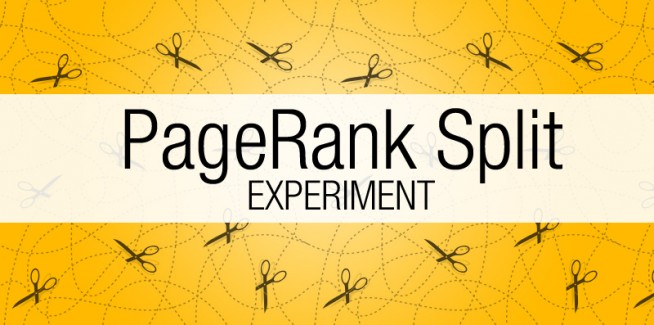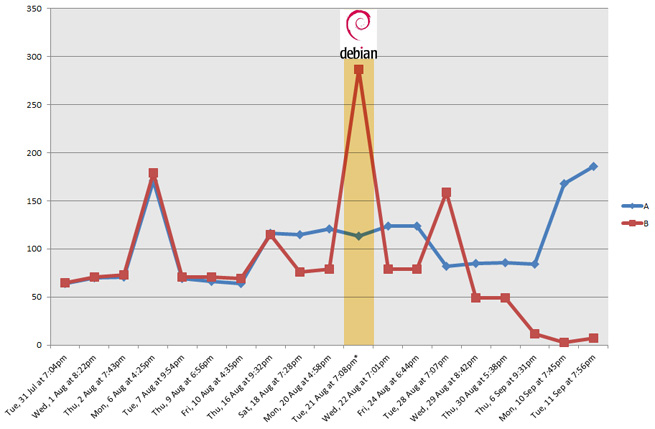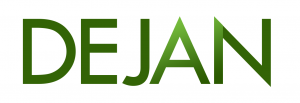
One of the commonly circulated SEO theories is that links from pages with many outgoing links are not worth much. Dejan Labs team put this theory to a test in hope to find out what really happens.
The Experiment Setup
Number of domains involved: 3 (2 test domains referred to as “A” and “B” and a buffer domain used to bridge PageRank)
Test domain characteristics: Very similar domain format with slight variation.
TLD: .com
Content: Minimal, unique, slight variation on both.
Control Period: 31 July 2012 – 20 August 2012 (used to test any natural fluctuations)
Test Period: 21 August 2012 – 11 September 2012
Key Activities
- Secure a link on a PageRank 7 sub-page on debian.org for our buffer site
- Link the buffer site to the test domain marked “B”
- Observed ranking fluctuations (same location, browser, settings, user, machine) looking for any rouge links unintended and undesirable for the experiment (none were discovered).
Elements of Interest
The page on debian.org contained 4,225 external followed links. Despite very high PageRank, the split was too great for our target page (on the buffer site) to receive any visible PageRank, even after the public TBPR update.
Experiment Results
One week after PageRank was passed to our target page, the test site rapidly gained position for the selected search term, reaching the highest position of #3. Currently (three months later) the page ranks #2 and holds its position without any variation. The leading result is a PageRank 4 page on a high authority domain. We do not expect these results to change.

TL;DR
Is it worth getting a link from an authoritative domain and/or high PageRank page which has thousands of outgoing links on it already? Yes.
Raw Data:
Tue, 31 Jul at 7:04pm
Website A #64
Website B #65
Wed, 1 Aug at 8:22pm
Website B #70
Website A #71
Thu, 2 Aug at 7:43pm
Website A #71
Website B #73
Mon, 6 Aug at 4:25pm
Website A #171
Website B #179
Tue, 7 Aug at 9:54pm
Website A #69
Website B #71
Thu, 9 Aug at 6:56pm
Website A #66
Website B #71
Fri, 10 Aug at 4:35pm
Website A #64
Website B #69
Thu, 16 Aug at 9:32pm
Website A #116
Website B #115
Sat, 18 Aug at 7:28pm
Website A #115
Website B #76
Mon, 20 Aug at 4:58pm
Website A #121
Website B #79
Tue, 21 Aug at 7:08pm
Website A #113
Website B #287
Tue, 21 Aug at 8:11pm
Website B linked from a site which is linked from http://www.debian.org (sub-page with 4,225 external followed links)
Wed, 22 Aug at 7:01pm
Website A #124
Website B #79
Fri, 24 Aug at 6:44pm
Website A #124
Website B #79
Tue, 28 Aug at 7:07pm
Website A #82
Website B #159
Wed, 29 Aug at 8:42pm
Website A #85
Website B #49
Thu, 30 Aug at 5:38pm
Website A #86
Website B #49
Thu, 6 Sep at 9:31pm
Website A #84
Website B #12
Mon, 10 Sep at 7:45pm
Website A #168
Website B #3
Tue, 11 Sep at 7:56pm
Website A #186
Website B #7
Dan Petrovic, the managing director of DEJAN, is Australia’s best-known name in the field of search engine optimisation. Dan is a web author, innovator and a highly regarded search industry event speaker.
ORCID iD: https://orcid.org/0000-0002-6886-3211

Yep, just as expected. Be prepared for people to go nuts about you getting the link instead of earning it. Only downside is that if all your links are like this, G will catch on and hand you a manual penalty (maybe….)
We’ve definitely seen great improvements in ranking from getting a backlink from any high authority (in this case, pagerank) pages. So all those saying otherwise, here is the proof!
Experiment continuation idea: relevant v non-relevant high pagerank backlink ranking change (although jumping up to #2 with 1 unrelated backlink is pretty powerful stuff).
Love the experiments, keep on keepin’ on!
-Oleg
Absolutely loving your experiments recently!
Thank you!
Great idea, a lot of work though.
Im sure this test will stir up the dramatic SEO community.
Either way always good to see studies regardless on how valid they are. I did notice the nice dip for domain B Aug 28th then a recovery with a stronger ranking. I almost always see a drop before a rise in rankings.
I assume the link was dofollow?
I find a lot of things fascinating about this. It’s interesting that the linked site actually decreased in rankings from #79 to #159 after the link, then increased very slowly. Even though there was just one link it did a gradual increase over a two week period. That’s not what I would have expected.
This article has encouraged me to do some testing of my own…it’s long overdue! Can anyone point me in the direction of articles that describe how best to do SEO testing like this?
Wow- I love it- proving conventional wisdom wrong. I always thought this, but now I know it. Thank you for this.
Yes it was.
I wonder if it (drop) means anything.
Not entirely wrong, if we picked a very difficult phrase we likely wouldn’t see any movement. I say this is a subtle effect.
Ping us back with your results.
The site A doesn’t get any link? poor it! You have asserted that it still worth to get a link from an authoritative domain which has thousand of outgoing links only because the site B had ranked? Maybe, but I don’t know which anchor text have you used, I don’t know which keyword have you tracked and its competitivity. I trust in you, but please can you provide more informations?
How much pagerank does the buffer site show on toolbar now?
Historically I have always seen decent drops before major gains that then lead into stabilized gains. Should do any test just for this ….
you amaze me every time, the way you stay on top of so many details.
AFAIK, even if a domain is brand-new and has no backlinks, from the moment it’s being indexed in Goole, it gets some minimal PR that it can pass to another website. Thus, even if you didn’t get a link from debian.org to the buffer domain, the link from the buffer domain to the domain B could improve its rankings, especially with the keyword in the anchor text. But I’ll try to test it to be 100% sure. What do you think about it?
thank you very much for research is always good to have the rspaldo of what is sold in SEO
Very interesting. This certainly has some important implications. However, I think the question Marta brought up is important. It’s possible that the SERP benefit came from the fact that site B received any link at all, rather than that it got the PR passed through the buffer site. I’m not saying it’s likely, but it’s a potential factor because we don’t have a site C variation that has a link from a site D which has no backlinks of its own.
It would definitely be interesting and useful to extend this experiment with some variations.
hey awesome experience.i would love to give it a try.
I’m late to the game on this, so I apologize for that. I’ve always felt that a link from a high PR page is worth pursuing regardless of how many links are on the page. It’s good that you have proved that. However, I would have added a wrinkle.
What if you created a site C with the exact same set of factors except the original linking page was a different PR 7 page with only ~2,000 links instead of 4,225? It’s unfortunate that you don’t know if those PR 7 values are actually equal in terms of raw PageRank, but that will be the best you can do. If the number of links on a page is a significant ranking factor (I believe it’s definitely a factor, but it might not be enough to matter), then site C *should* rank better for that keyword. You’d have to do that test a bunch of times to sorta prove it, but I’d be curious to see those results.
Hi Dan,
Fantastic experiment. Would you be able to provide us with some basic competition metrics for the keyword phrase you went after here? That would provide some further insight to the experiment. Thanks Dan
Very informative post… I’m going to try this on one of my websites and if it works I will be back to tell you about it.
Thanks once again!
I noticed that too, but according to the raw data above, didn’t the dip occur before the link actually took place (by an hour)?